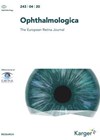You searched for "visual field"
OCTA in diabetic macular oedema treated with intravitreal aflibercept (DOCTA Study)
3 April 2024
| Sofia Rokerya
|
EYE - Vitreo-Retinal
Central vision loss due to diabetic macular oedema (DME) can be attributed not only to presence of the macular oedema itself but also, in some cases, to alterations of the foveal avascular zone (FAZ). The DOCTA trial was a longitudinal,...
Papilloedema: an update
1 June 2016
| James F (Barry) Cullen
|
EYE - Neuro-ophthalmology
Some readers may have seen a recent report in the national newspapers of the case of a teenage girl with persistent severe headache associated with a fatal brain tumour having been undiagnosed despite many consultations with her medical advisers. It...
The last three patients: general practice (Patient One)
3 April 2023
| Jonathan Rees (Prof)
|
EYE - General
Professor Jonathan Rees is an Emeritus Professor of Dermatology at the University of Edinburgh (2020). He held the Grant Chair of Dermatology in Edinburgh from 2000 to 2020, and before that the Chair of Dermatology in Newcastle from 1992 to...
A unique case of macular burn from ‘toy’ laser
2 February 2024
| Paras Agarwal, Manoj Kulshrestha
|
EYE - General
The first laser was created in 1960 and its name is an acronym for ‘light amplification by stimulated emission of radiation’. Laser technology has been used for medical, industrial, research and entertainment purposes in a variety of fields following extensive...
Adaptive optics imaging: resolving single cells in the living eye
1 June 2014
| Michel Michaelides (Prof), Adam Dubis
|
EYE - Cornea
The human retina is unique in the central nervous system (CNS) in that it can be directly visualised non-invasively. Technological advances of several imaging modalities, including optical coherence tomography (OCT), multichannel scanning laser ophthalmoscopy (SLO) and fundus photography, have afforded...
In vivo confocal microscopy, principles and use in keratitis Part 1: Principles
In 1968 Maurice introduced the concept of high powered specular microscopy, it was in that very year that the first scanning confocal microscope was proposed. Marvin Minsky developed the first confocal microscope in 1955 named the ‘double focusing scanning microscope’....Embryology in clinical practice
1 February 2016
| Naser Ali
|
EYE - Cataract, EYE - Cornea, EYE - General, EYE - Glaucoma, EYE - Imaging, EYE - Neuro-ophthalmology, EYE - Oculoplastic, EYE - Oncology, EYE - Orbit, EYE - Paediatrics, EYE - Pathology, EYE - Refractive, EYE - Strabismus, EYE - Vitreo-Retinal
The fascinating world of embryology is both beautiful and practical. It is a home video of our evolutionary history through the ages from the single cell through to the life aquatic, the development of gut, limbs and brain, and most...
Good News from Switzerland: A History of Retinal Reattachment Surgery
1 December 2014
| Robert Harvey
|
EYE - Vitreo-Retinal
In one concise volume the reader learns of the recent rapid evolution in vitreoretinal (VR) surgery. The pioneering innovators were often remarkable personalities and this book helps to bring them to life. Prior to 1929 victims of retinal detachment were...
25 years of OCT
David Huang first described optical coherence tomography (OCT) in 1991, in his seminal paper on the subject in Science. This method developed the work of others on ophthalmic interferometry, which essentially showed that measuring reflected light could be used to...Understanding and confronting bacterial endophthalmitis
Abdus Samad Ansari highlights the importance of early recognition of this condition using an unusual presentation. Endophthalmitis is a medical emergency with devastating consequences. Despite adequate treatment, severe cases frequently result in permanent blindness. Endophthalmitis involves inflammation of both the...Uveal melanoma
3 August 2023
| Mertcan Sevgi, Timothy Beckman, Paul Cauchi, Julie Connolly, Vikas Chadha
|
EYE - Pathology, EYE - Oncology, EYE - Imaging
Uveal melanoma is the most common primary intraocular tumour. However, they are still rare, with an incidence of 2-8 per million [1]. The presence of a choroidal naevus is a risk factor for uveal melanoma [1]. Patients with choroidal lesions...





